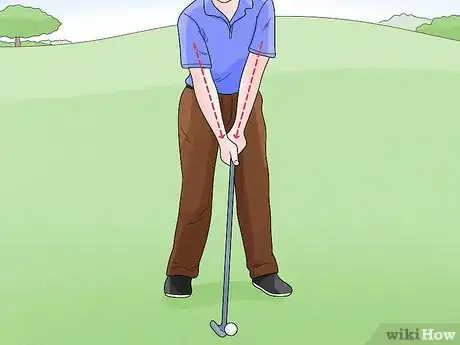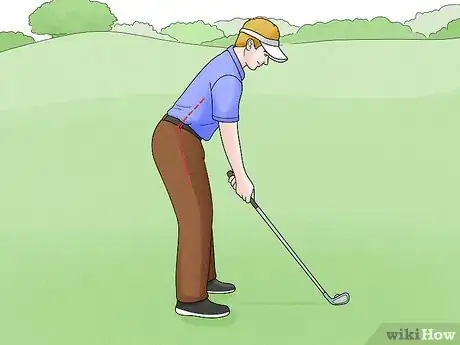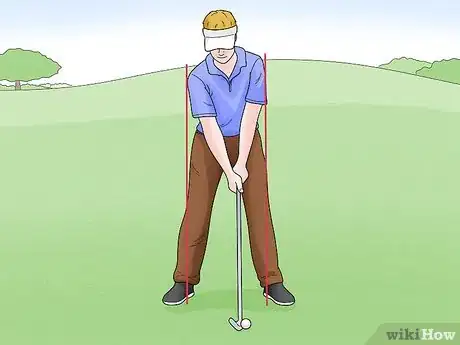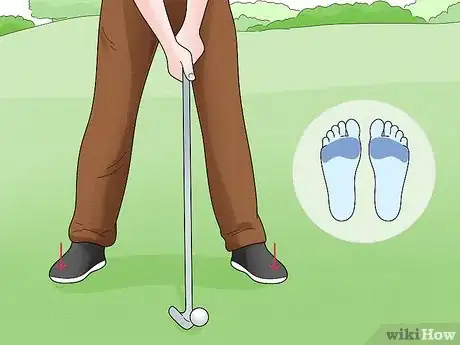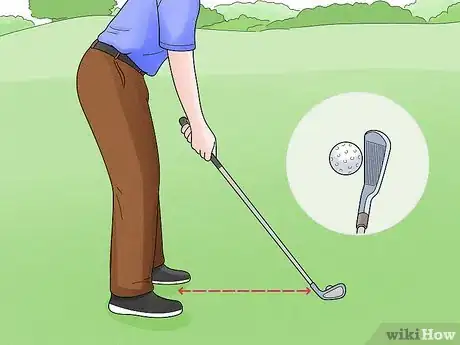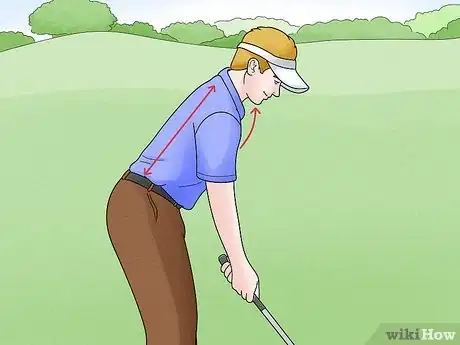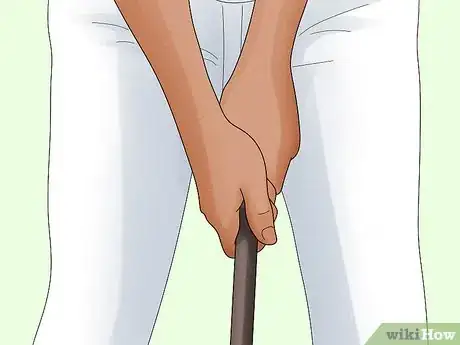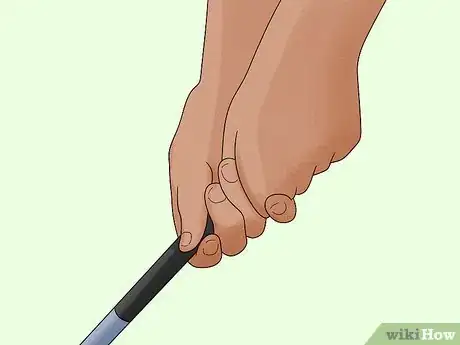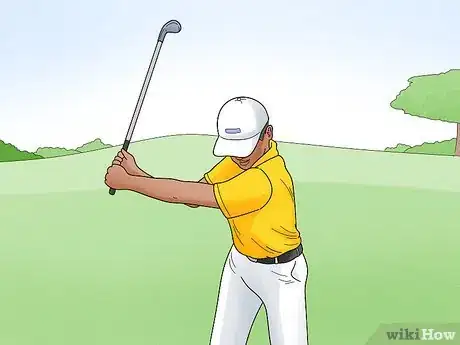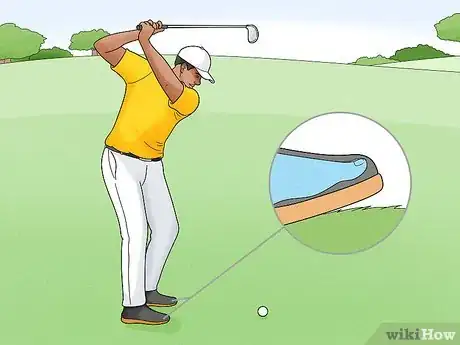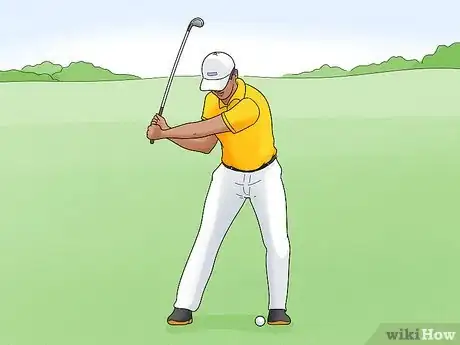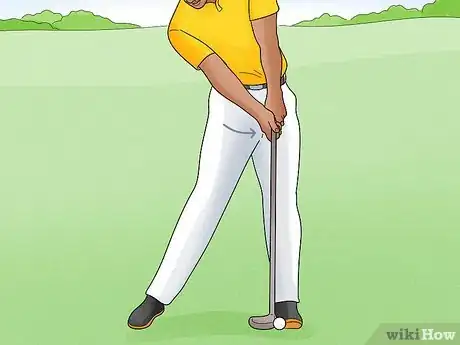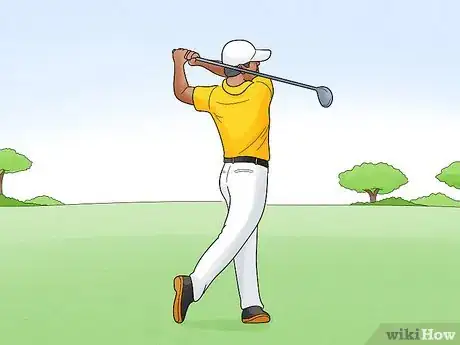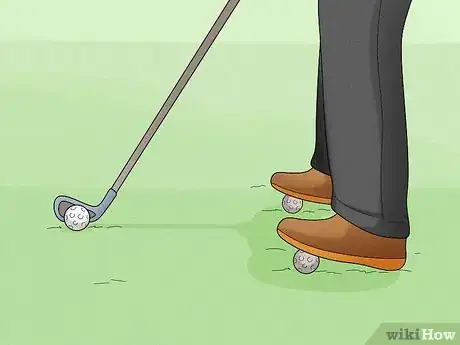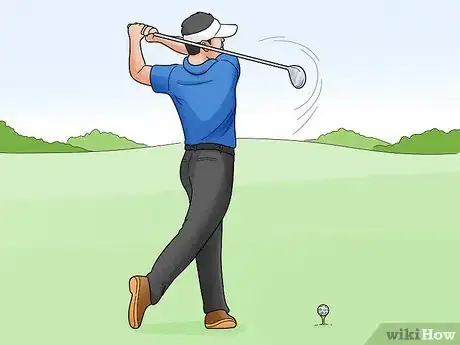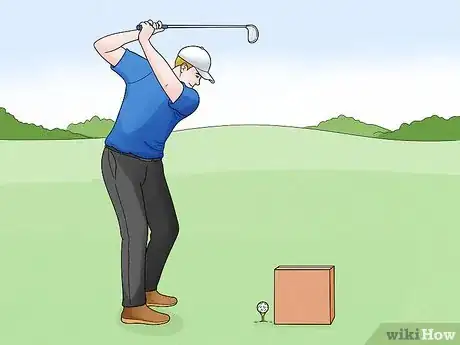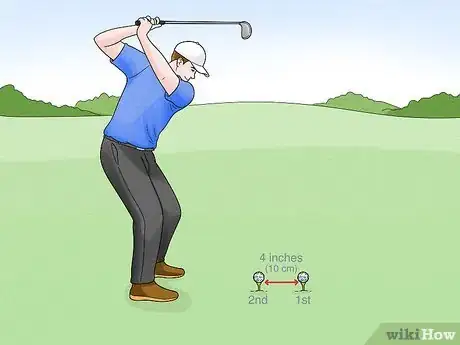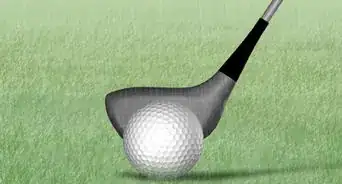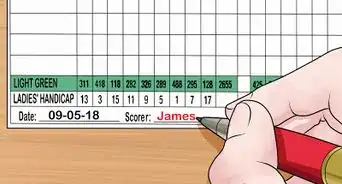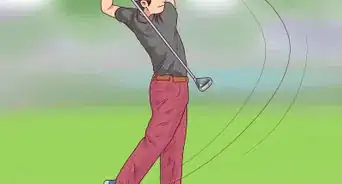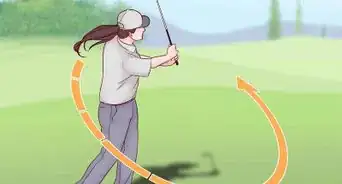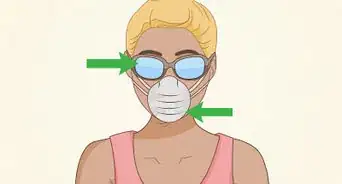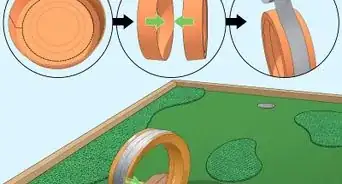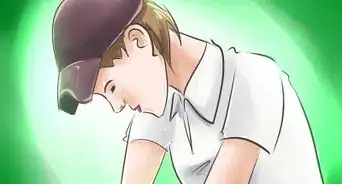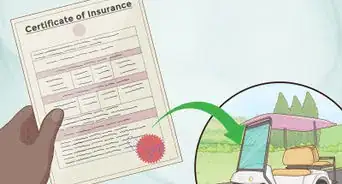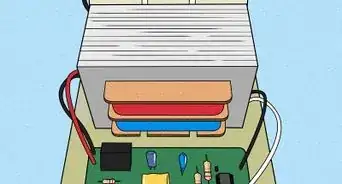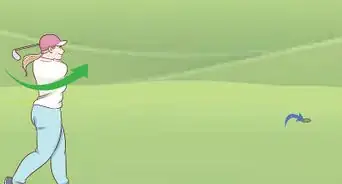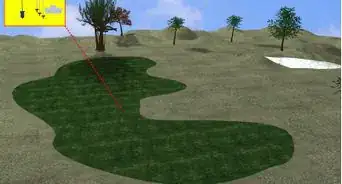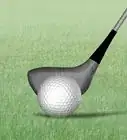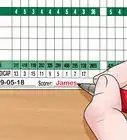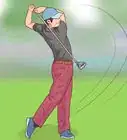This article was co-authored by Michael Metz. Michael Metz is a Golf Instructor and the Director of Instruction at Simi Hills Golf Course. With more than 15 years of experience, Michael is adept at coaching all facets of Golf. Mike uses technology, such as Flightscope, V1 Swing Suite, Blast Motion, and BodiTrak pressure mapping, to provide advanced golf training with quick results.
There are 8 references cited in this article, which can be found at the bottom of the page.
This article has been viewed 9,561 times.
If you’ve ever been referred to as “shankopotamus” or “the shankster” out on the links, then it may be time for you to make some changes to your swing. A shank happens when you hit the ball with the hosel (the socket of the club that holds the shaft) instead of the clubface. The good news is that you can fix the problem. It all starts with a solid golf swing that’s smooth and consistent. But if you find yourself continuing to hit shanks, there are a few quick fixes you make to try to put an end to it. There are also some drills you can try that may be able to help fix your swing and break you out of any bad habits that you may have.
Steps
Quick Stance Fixes
-
1Relax your arms and let them hang naturally when you grip your club. Relax and let your arms hang down toward the ground at your side, directly under your shoulders.[1] Rest the clubhead on the ground and take hold of the club with your non-dominant hand. Then, place your dominant hand just below it and interlock your index and pinkie fingers.
- It may feel redundant (and annoying) to hear someone say “relax!” to improve your swing, but if you start your stance by releasing any tension, it can help.
- Letting your arms hang straight down before you set up can also help make sure you’re the right distance away from the ball.
-
2Bend at your waist like you’re about to sit down. Move the clubhead so the ball is in the center of the face. Bend your torso at your waist and allow your knees to slightly bend so you’re comfortable.[2]
- A common mistake is to round your back to bend towards the ball.
- It’s important that you bend at your hips so you can rotate properly in your swing.
Advertisement -
3Adjust your feet and shoulders so they’re parallel with your swing line. Take a second to look at what you’re aiming for and imagine an invisible line that runs from the ball to the target. Reposition your feet and shoulders so they form a parallel line with the imaginary swing line, and keep your feet about shoulder-width apart so your comfy and stable.[3]
- It can help to have somebody stand behind you to confirm you’re aiming where you think you’re aiming.
-
4Distribute your weight on the balls of your feet.[4] Avoid leaning too far forward or shifting your weight onto your heels, both of which can move the clubface out of position and is a recipe for a shank pie. Center your weight on the balls of your feet so you’re stable but still able to rotate when you swing.[5]
- If your weight shifts forward onto your toes in your stance, you may be too far away from the ball. Move closer to help balance your weight.
-
5Stand further away from the ball to keep the clubface in line with it. If you find yourself still shanking after making sure your stance is correct, try standing just a little bit further away than you were before. Moving further away than you think you need to be can help put the clubface in the right position when you swing.[6]
- Make sure your weight still stays balanced on the balls of your feet.
- Over time, you can work to improve your swing and you’ll get a better sense of exactly where you need to stand to avoid a shank.
-
6Hold your chest high to keep your head from dropping. A common golf swing mistake is to round your shoulders or drop your head to try to avoid lifting it. Instead, keep your head still and your chest up to help hold your back in a straight line and allow for a smooth, consistent swing.[7]
- You’re probably sick of hearing people tell you, “Keep your head down!” This is an easy way to fix the problem.
Swing and Grip Tips
-
1Keep your hands stiff at the start of your backswing. When you start moving the club backward to start your swing, avoid allowing your wrists to bend in order to bring the club up overhead. Instead, hold your hands still to keep the club in the right alignment from the beginning to the end of your swing.[8]
- As you rotate and move your arms, your club will come up like it’s supposed to, so don’t worry. Flexing or bending your wrists can really mess up your swing.
-
2Use a relaxed grip for a smoother swing. Try not to have a stranglehold death grip on the club. Take a strong, but comfortable and relaxed grip so you aren’t holding extra tension in your hands, which can make for an awkward swing and lead to a shank.[9]
- Too much tension can affect the way the club swings through after you hit the ball, which is often where shanks happen.
- Don’t loosen your grip so much that the club goes flying out of your hand, but if you keep shanking, try lightening your hold a bit.
-
3Release any tension from your arms as you swing. Keep the same relaxed energy in your arms that you had as you when you were setting up your shot. Don’t flex or tense your arms to try to add more power to your shot. You’ll be much more likely to produce a stiff swing that can lead to a shank.[10]
- If you find yourself feeling really tense before your swing, try taking a practice swing or two to loosen up.
-
4Lift your toes when you swing to keep your weight from shifting. Keep your weight balanced on the balls of your feet, but flex your toes upward inside of your shoes. Keep them flexed as you swing to help prevent your weight from moving too far forward or back onto your heels.[11]
- Try this out if you keep shanking. As your swing improves, you may not need to continue doing it.
-
5Focus on keeping the grip end from moving away when you swing. As you’re swinging your club forward, try not to let it move too far away from your body in an effort to reach out to the ball. This can move the clubhead out of position and cause you to hit the ball with the hosel. Instead, keep the end of the grip close to your body so you make clean contact with the clubface.[12]
-
6Force your bottom hand forward on your follow-through to correct your swing. To fix issues with your swing and follow-through, take some practice shots but exaggerate how much you push your bottom hand through the swing. Force your bottom hand forward so that it’s over your top hand as you make contact with the ball and follow through.[13]
- Try this out a few times to see what difference it makes. It can help you get a better idea of how you need to swing in order to strike the ball properly.
-
7Swing all the way through the ball for a clean follow-through.[14] Try not to slow down your swing as you’re about to hit the ball, which is an easy way to set up a shank. Focus on keeping your balance and maintaining the same amount of force all the way through your swing.[15]
- A large backswing with no follow-through means your swing won’t be smooth and consistent, making it much more likely that you’ll smack the ball with the hosel instead of the clubface.
Practice, Practice, Practice
-
1Hit practice shots with a golf ball under the toes of each foot. To help make sure you’re keeping your weight in the balls of your feet, try taking a few shots on the range with a golf ball under each foot. Place the golf ball under your toes so you can literally feel where you’re holding your weight as you swing. Then, remove the balls to hit some more practice shots and focus on keeping your weight where the golf balls were.[16]
- It might be uncomfortable, but it can help you see where you need to distribute your weight.
- You may only need to take 2-3 shots to get the message.
-
2Try missing the ball on purpose to force your body to pull the club in. If your problem is that your club keeps moving away from your body when you swing, set up in your standard position. Then, do your normal swing, but make it to miss just below your ball. Try out a few practice swings to force yourself to pull the club closer into your body when you swing, which can help fix shanks.[17]
- You may be surprised how far you have to pull to miss the ball! This drill can give you an idea of where you need to keep the club relative to your body for a shank-free shot.
- After you miss the ball a few times, try hitting it to see if that helps correct the issue.
-
3Place a soft object just before the toe of the club to retrain your swing. Take something soft like a cardboard box or a pillow and place it on the ground in front of you, about 1⁄2 inch (1.3 cm) in front of the clubhead when you’re lined up to hit the ball. Try a few light swings and get used to hitting the ball without bumping into the barrier. Work your way up to harder swings. When you’re no longer hitting the barrier, you can remove it and try out a few shots.[18]
- The barrier helps prevent you from moving your club forward and hitting the ball with the hosel, which is how a shank happens.
-
4Line up 2 balls and hit the furthest one first to improve your swing path. Take 2 golf balls and line them up about 4 inches (10 cm) apart. Line up with the ball closest to you and then swing to hit the furthest ball. Then, hit the ball closest to you to get a feel for how you need to properly swing. Repeat the drill a few times to work on realigning your swing.[19]
- Learning where to put the clubhead when you swing can help prevent shanks.
Expert Q&A
-
QuestionWhy am I shanking my irons all of a sudden?
 Michael MetzMichael Metz is a Golf Instructor and the Director of Instruction at Simi Hills Golf Course. With more than 15 years of experience, Michael is adept at coaching all facets of Golf. Mike uses technology, such as Flightscope, V1 Swing Suite, Blast Motion, and BodiTrak pressure mapping, to provide advanced golf training with quick results.
Michael MetzMichael Metz is a Golf Instructor and the Director of Instruction at Simi Hills Golf Course. With more than 15 years of experience, Michael is adept at coaching all facets of Golf. Mike uses technology, such as Flightscope, V1 Swing Suite, Blast Motion, and BodiTrak pressure mapping, to provide advanced golf training with quick results.
Golf Instructor You might not be standing correctly! Make sure you always start with the weight on the balls of your feet. Your body is always looking to balance itself when you do anything that involves speed or force. By starting on the balls of your feet, you can shift to your heels and keep the club in the proper spot to hit the ball.
You might not be standing correctly! Make sure you always start with the weight on the balls of your feet. Your body is always looking to balance itself when you do anything that involves speed or force. By starting on the balls of your feet, you can shift to your heels and keep the club in the proper spot to hit the ball.
References
- ↑ https://golftips.golfweek.com/stop-shanking-golf-ball-1027.html
- ↑ https://golftips.golfweek.com/stop-shanking-golf-ball-1027.html
- ↑ https://golftips.golfweek.com/stop-shanking-golf-ball-1027.html
- ↑ Michael Metz. Golf Instructor. Expert Interview. 24 March 2022.
- ↑ https://www.golf-monthly.co.uk/videos/golf-swing-tips/stop-shanks-four-common-causes
- ↑ https://golf.com/gear/irons/monday-morning-swing-coach-pay-attention-poults-three-instant-shank-fixes/
- ↑ https://www.golfdigest.com/gallery/david-leadbetter-prevent-shanks
- ↑ https://www.golf-monthly.co.uk/videos/golf-swing-tips/stop-shanks-four-common-causes
- ↑ https://www.golfdigest.com/gallery/david-leadbetter-prevent-shanks
- ↑ https://golftips.golfweek.com/stop-shanking-golf-ball-1027.html
- ↑ https://www.golfdigest.com/gallery/david-leadbetter-prevent-shanks
- ↑ https://www.golfdigest.com/gallery/david-leadbetter-prevent-shanks
- ↑ https://golftips.golfweek.com/stop-shanking-golf-ball-1027.html
- ↑ Michael Metz. Golf Instructor. Expert Interview. 24 March 2022.
- ↑ https://www.americangolf.com/blog/golf-tips/how-to-avoid-a-shank/
- ↑ https://golf.com/gear/irons/monday-morning-swing-coach-pay-attention-poults-three-instant-shank-fixes/
- ↑ https://youtu.be/FI9HYJKgaJg?t=23
- ↑ https://golftips.golfweek.com/cure-golf-shank-20268.html
- ↑ https://golftips.golfweek.com/cure-golf-shank-20268.html
